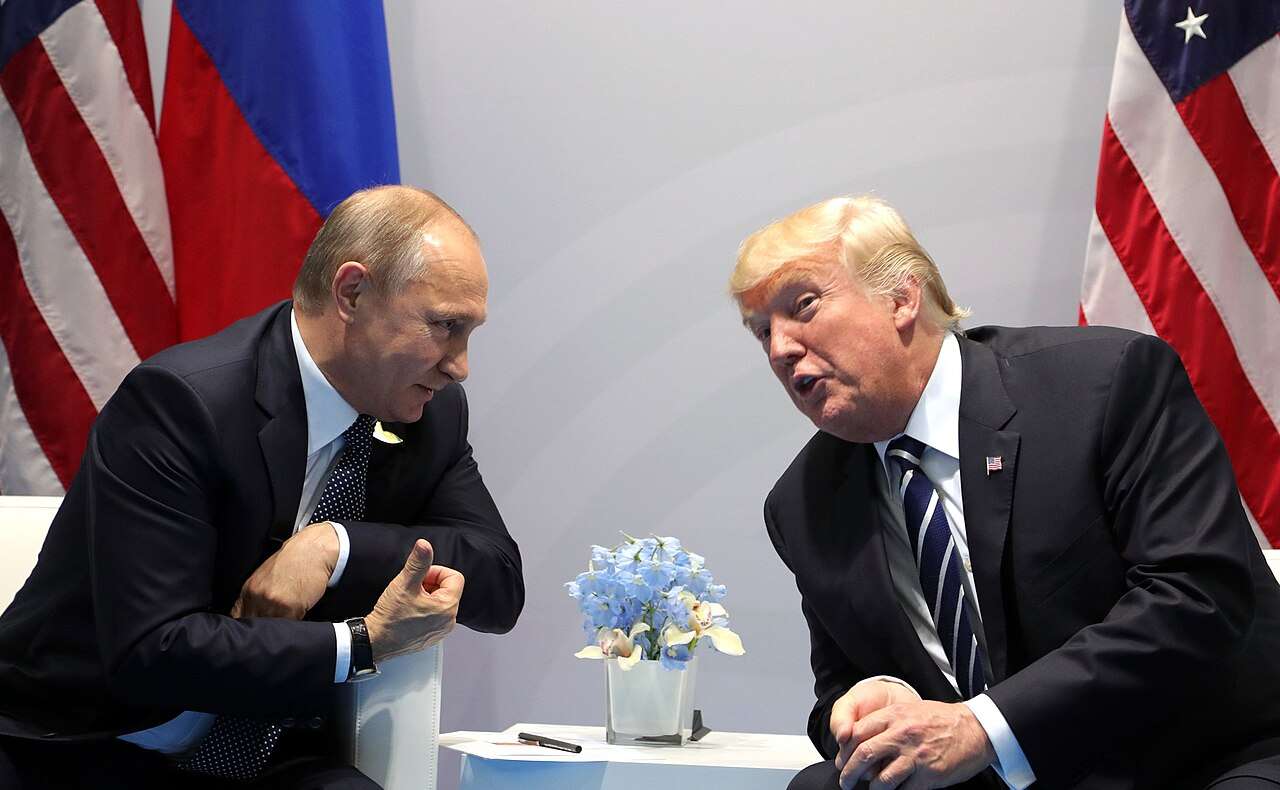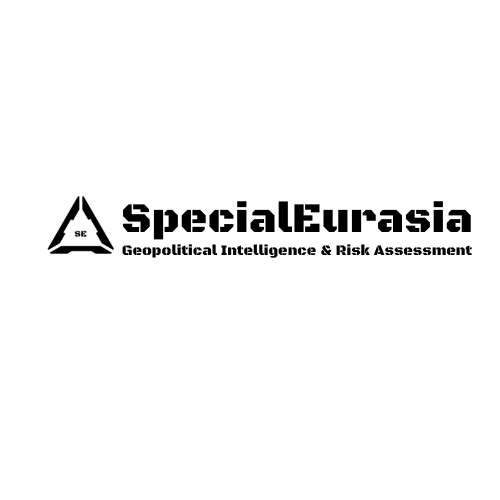

Executive Summary
This report analyses the geopolitical significance of the meeting between U.S. President Donald Trump and Russian President Vladimir Putin in Anchorage, Alaska, on August 15, 2025.
The analysis focuses on the leaders’ narratives, their fundamental strategic aims, and the ensuing consequences for Ukraine, Europe, and the global order.
The report concludes that although no agreement was reached, the summit suggests a potential change in U.S.–Russia relations, which could disrupt European security frameworks and test transatlantic unity.
Key Takeaways
The Alaska summit underscored Russia’s effort to portray historical ties with the United States as a foundation for renewed cooperation.
Trump’s rhetoric highlighted Russia’s power advantage over Ukraine and suggested Kyiv may face pressure to compromise.
The meeting revealed Washington’s intent to weaken the Sino-Russian partnership, positioning Russia as a potential counterbalance to China.
Background Information
On August 15, 2025, Vladimir Putin and Donald Trump met for their first in-person summit in six years at the Elmendorf-Richardson military base in Anchorage, Alaska. Lasting close to three hours, the encounter began with a joint arrival ceremony, transitioned to private discussions, and concluded with a restricted meeting of senior aides. On the Russian side were Foreign Minister Sergey Lavrov and adviser Yuri Ushakov, while on the American side were Secretary of State Marco Rubio and special envoy Steve Witkoff.
The summit started with symbolic gestures: both leaders walked down red carpets simultaneously from their respective aircraft, shook hands, and travelled together in Trump’s armoured limousine. During the closed-door session, discussions reportedly addressed Ukraine, European security, bilateral trade, and cooperation in the Arctic.
In a later press conference, Putin highlighted the enduring historical ties between Russia and Alaska, citing the World War II Lend-Lease program, mutual sacrifices, and cultural legacy from the Russian U.S. period. He framed the talks constructively and stressed the Kremlin’s interest in resolving the Ukraine conflict if Moscow’s security concerns were addressed.
Trump acknowledged progress in his remarks, but he admitted that they had reached no agreement. He made a pledge that he would consult with NATO allies and Ukrainian President Volodymyr Zelensky. The U.S. president referred to Russia as a “mighty country” and argued that Ukraine lacked comparable strength, suggesting Kyiv would eventually need to accept a negotiated settlement. He also blamed previous U.S. administrations for pushing Russia toward China, which he called a “natural competitor” of Moscow.
In a subsequent Fox News interview, Trump repeated that Ukraine “must agree to a deal” and described the summit as friendly and fruitful. He showed that, in his view, had he been in office earlier, the war would not have occurred.
Geopolitical Scenario
Divergent Narratives
The summit revealed two distinct rhetorical strategies. Putin used history and cultural symbols in his narrative, depicting Russia and the United States as neighbours separated merely by the Bering Strait. By invoking shared sacrifices during WWII, he constructed a narrative of natural partnership and mutual respect. His language aimed to create a moral foundation for cooperation, resonate with both domestic and international audiences, and counter the portrayal of Russia as a permanent adversary.
In contrast, Trump’s rhetoric was pragmatic and transactional. He characterised the conflict as a stark imbalance of power, plainly saying that Russia holds more strength than Ukraine. This language implicitly recognised Moscow’s military strength and limited Kyiv’s flexibility.
Together, these narratives underscore a potential convergence: both leaders emphasised the desirability of peace, but each did so from different vantage points. Russia focused on the validity of its history and the need for mutual consideration, but the United States concentrated on the existing power dynamics and the need to negotiate.
Prospects for Cooperation
Despite the absence of a signed deal, the summit suggested several areas of potential cooperation. Putin cited economic exchanges, investment, digital technologies, and Arctic cooperation as potential areas for collaboration between Russia and the United States. The meeting gave markets lukewarm signals, with Russian indices reacting well to the dialogue news.
Most significantly, the summit set the stage, rhetorically, for additional negotiations. Both leaders emphasised their direct personal connection, which could lead to more practical negotiations. Despite expecting criticism, Trump thought Putin’s invitation made holding the next meeting in Moscow realistic.
Trump’s Strategic Framing
Trump’s rhetoric went beyond Ukraine. He underlined that past U.S. administrations had pushed Russia and China into a closer relationship. He believes Moscow and Beijing are “natural competitors,” with Russia possessing extensive land and resources, while China faces demographic pressure and has territorial ambitions. Trump’s emphasis highlighted a strategic aim: to create separation, or at least tension, between Russia and China.
This pursuit could signal a shift in U.S. foreign policy priorities, with Washington aiming to neutralise Russia in Europe while concentrating more intensely on counterbalancing China in the Asia-Pacific. Such a shift could carry profound consequences for NATO, the EU, and Ukraine.
Risks for Europe and Ukraine
The implications for Europe and Ukraine are significant. Trump’s remark that “Ukraine must agree to a deal” suggests Washington might pressure Kyiv to concede territory to end the conflict. Should the United States embrace this stance, European countries may encounter marginalisation, compelling them either to agree with Washington or to oppose a settlement deemed destabilising.
For Ukraine, the risks are existential. Acceptance of a deal on Russia’s terms could mean permanent territorial loss and the erosion of sovereignty. Nonetheless, resistance carries the risk of isolation should Washington curtail material and intelligence support. In the past, Trump’s emphasis on alternatives to NATO for security guarantees suggests a willingness to redefine the transatlantic security architecture, potentially circumventing established European institutions.
For the European Union, the summit introduces both political and strategic dilemmas. On one hand, EU leaders may see an opportunity to stabilise relations if Washington and Moscow move closer. Alternatively, the European Union is at risk of being marginalised in shaping outcomes that directly affect its security. Internal divisions among member states concerning sanctions, energy exposure, and relations with Russia may impede a unified European response.
Indicators to Monitor
Outcomes and statements after Trump’s calls with Zelensky and NATO members.
Any signs of Russian policy adjustments towards China, particularly in the energy or security sphere, following the summit.
Statements from EU capitals showing unity or division over potential compromises on Ukraine.
Kyiv’s public messaging and red lines after Trump’s assertion that Ukraine must “accept a deal.”
Political and media responses that may constrain leaders’ room for manoeuvre in further talks.
Conclusion
The Alaska summit marked the first high-level U.S.–Russia meeting in years and introduced competing narratives into the international discourse. Putin aimed to establish a relationship based on shared history and reciprocal respect, whereas Trump highlighted military considerations and transactional negotiations. Although the parties reached no agreement, the encounter signalled the potential for renewed bilateral dialogue, particularly in the economic and strategic domains.
The broader geopolitical implications, however, are more complex. Ukraine faces the risk of external pressure to compromise under conditions of military disadvantage. The European Union risks a potential diminution of its influence on security outcomes. Washington’s broader strategic goal of separating Russia and China shows the summit might focus less on Ukraine and more on the global balance of power.
Whether the Alaska summit leads to pragmatic accommodation or fresh disruptions in the international order will depend on how these narratives play out, the choices Washington and Moscow make, and the reactions from Europe and Kyiv in the months ahead.
*Cover image: U.S. President Donald Trump and Russian President Vladimir Putin (Credits: Kremlin.ru, CC BY 4.0, via Wikimedia Commons)

